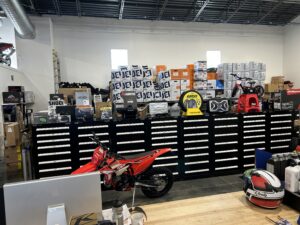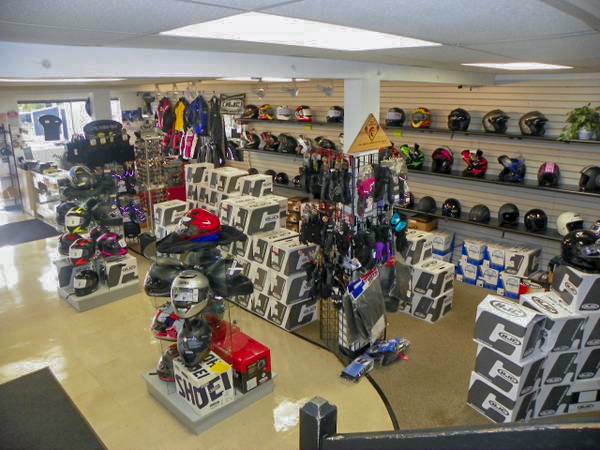Comprehending the Important Parts of a Motorbike: A Comprehensive Overview for Lovers
For bike enthusiasts wanting to boost their riding experience and ensure their bikes run smoothly, recognizing the essential elements of a bike is vital. Each component, from the engine's intricate functions to the crucial function of the stopping mechanisms, not just affects performance but additionally security and comfort. This guide will certainly go through the fundamental parts that every motorcyclist need to know with, allowing notified options in both upkeep and possible upgrades. As we start this exploration, one must ask: how does each component communicate to develop the smooth trip every lover seeks?
Engine Elements

The camshaft plays an essential duty in managing the timing of the engine's shutoffs, guaranteeing the specific opening and closing required for reliable fuel and air intake, along with exhaust expulsion. This timing is vital to keeping optimal engine efficiency and performance. Additionally, the carburetor or gas shot system, depending upon the bike model, is accountable for blending air with gas in the proper proportion for combustion.
The air conditioning system, either air or liquid-based, functions to maintain the engine's temperature within functional restrictions, avoiding overheating and guaranteeing durability - motocross gear. Each part, meticulously developed and incorporated, adds to the smooth procedure of the engine, specifying the motorcycle's power output and total efficiency
Transmission System
Essential to the motorbike's functionality, the transmission system guarantees effective power transfer from the engine to the wheels. This system consists of a number of important parts, consisting of the clutch, transmission, and final drive, each playing a crucial role in translating the engine's power into movement. The clutch, usually operated by a hand bar, serves to engage and disengage the engine from the transmission, permitting smooth equipment adjustments and regulated velocity.
The transmission, usually described as the transmission correct, contains a set of equipments that riders can by hand change through to change the bike's rate and torque outcome. These gears are arranged in a sequence that makes it possible for the bike to accelerate efficiently and preserve optimum engine performance throughout numerous rates. The majority of bikes use a sequential gearbox, calling for the biker to shift gears in a fixed order.
Braking Devices
While comprehending the transmission system is key to utilizing a motorbike's power, similarly essential is the capability to regulate and stop that power successfully, which is where braking systems enter into play. Brakes are important for safety and efficiency, supplying the motorcyclist with the required control to browse different terrains and problems. Generally, motorbikes include two kinds of braking systems: disc brakes and drum brakes.
Disc brakes are extra common in modern motorbikes due to their premium efficiency. This system provides much better warmth dissipation, consistent efficiency, and boosted stopping power, particularly in damp problems.
Conversely, drum brakes, though less typical, are still located in some motorcycles. They work by pushing brake footwear versus the inner surface area of a drum connected to the wheel. While usually much less effective in heat dissipation and stopping power, drum brakes are easier and more economical.
Recognizing these braking systems' nuances enables motorcyclists to keep their bikes correctly and appreciate the engineering that guarantees efficient and risk-free stopping.
Suspension and Steering
Suspension and steering systems are vital components that considerably influence a motorbike's handling and experience comfort. The shock absorber, containing forks at the front and shock absorbers at the back, soaks up roadway irregularities, enhancing security and control. Front forks, upside down or normally telescopic, compress and rebound to alleviate effects, while rear shock absorbers preserve tire contact with the road, crucial for grip and security.
Steering, centered around the handlebars, connects the cyclist to the bike's directional control. The guiding head bearings ensure smooth operation, permitting exact ability to move. Proper alignment and upkeep of these bearings are important for predictable steering feedback and minimizing motorcyclist tiredness.
The suspension's adjustability is another crucial element; preload, damping, and rebound settings permit customization to fit different riding designs and conditions. This flexibility is crucial for maximizing efficiency, whether browsing metropolitan streets or taking on tough trails. Innovations like electronic shock absorber provide real-time adjustments, enhancing adventure high quality across varied surfaces.

Electric Systems
After ensuring a smooth and controlled trip with efficient suspension and guiding systems, interest transforms to the electric systems, an essential facet of modern motorbikes. These systems play a crucial role not just in starting the engine however also in powering different components that improve the performance and security of the bike.
At the heart of a motorbike's electric system is the battery, which shops electric energy necessary for beginning the engine and powering complementary systems - motorcycle parts nz. The alternator or generator, combined with the rectifier-regulator, guarantees the battery continues to be charged while the motorbike is in procedure, transforming power Learn More into electric energy and preserving voltage levels
The ignition system, one more essential component, is in charge of stiring up the air-fuel blend in the engine's cylinders. Modern bikes often use an electronic ignition system, using higher performance and reliability contrasted to conventional systems.
Illumination systems, consisting of headlights, tail lights, and signs, are also important, making sure visibility and safety for the biker. Added digital elements such as sensing units, control systems, and displays add to sophisticated functions like gas shot management, anti-lock stopping systems (ABS), and electronic dashboards, additionally boosting the riding experience.
Final Thought
A comprehensive understanding of a motorbike's necessary parts, consisting of the engine, transmission system, stopping systems, suspension, steering, and electrical systems, is vital for enthusiasts intending to optimize safety and security, convenience, and efficiency. my sources Proficiency of these components enables informed decisions regarding maintenance and upgrades, inevitably boosting the riding experience. By integrating this expertise, cyclists can ensure their motorbikes run at peak efficiency and integrity, thereby maximizing both satisfaction and longevity of their lorries.
For bike fanatics looking to raise their riding experience and ensure their bikes run efficiently, recognizing the crucial elements of a motorbike is extremely important.Essential to the bike's functionality, the transmission system makes certain efficient power transfer from the engine to the wheels.While recognizing the transmission system is crucial to taking advantage of a bike's power, equally crucial is the ability to manage and quit that power efficiently, which is where stopping systems come into play. Commonly, motorcycles feature two kinds of stopping systems: disc brakes and drum brakes.
A thorough understanding of a motorcycle's necessary parts, including the engine, transmission system, braking devices, suspension, this content steering, and electrical systems, is crucial for enthusiasts aiming to enhance efficiency, safety and security, and convenience.